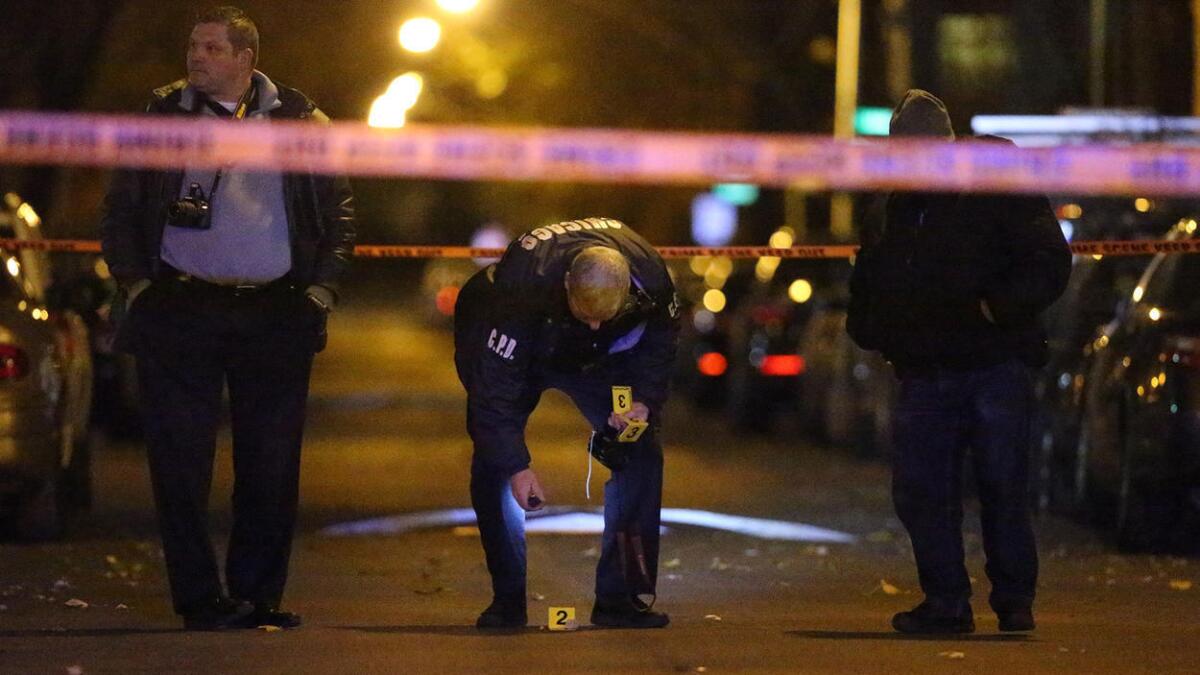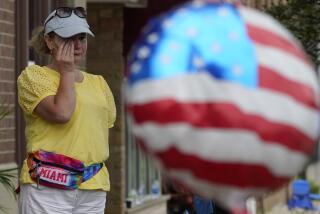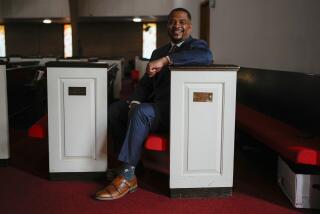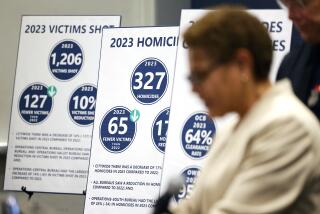Chicago tops 700 homicides — bloodiest year in decades with a month to go in 2016

Reporting from chicago — In a year of relentless violence, Chicago this week hit another gruesome milestone, exceeding 700 homicides for the first time in nearly two decades, according to Police Department records.
The 700-mark was reached when a 25-year-old man was fatally shot about 6:20 a.m. Wednesday in the Burnside neighborhood, said Frank Giancamilli, a police spokesman. Then at about 8 p.m., a 24-year-old man was shot and killed in the South Shore neighborhood.
The year got off to a violent start with 50 homicides in January and rarely let up even after the end of the summer — the peak season for shootings.
The numbers are simply off the charts. The 701 homicides through Wednesday marked a nearly 56% jump from the 450 killings a year earlier. With one month to go, that represents the most homicides since 704 in 1998.
Police Department statistics do not include killings on area expressways, police-involved shootings, other justifiable homicides or death investigations that could later be reclassified as homicides. A fatal shooting also took place early Thursday, but an autopsy hasn’t confirmed that the death was a homicide.
Nearly 4,050 people have been shot, a 50% jump from 2,699 victims a year earlier, according to department statistics. Shooting incidents rose by comparable figures, to 3,315, up 49% from 2,224 a year earlier.
The surge in violence has come at a time of upheaval for the Police Department amid an ongoing investigation by the U.S. Justice Department in the fallout over the video showing the fatal shooting of black teenager Laquan McDonald by an officer in October 2014.
Police Superintendent Eddie Johnson, who was a surprise appointment in March after the city’s top cop was fired over the handling of the McDonald shooting, said his department is doing all it can to combat violence rooted in poverty and hopelessness.
On Tuesday, following a speech to the Union League Club, Johnson called this year’s homicide totals “unacceptable,” blaming what he called a “a small subsection of citizens” for the violence.
“The police are doing their job,” he told reporters. “What we need help in is holding these repeat gun offenders accountable for this gun violence, and until we do that, we’re going to continue to see the cycle of violence.”
Month after month this year, homicides in Chicago have soared to levels not seen since the 1990s. The 92 homicides in August marked the most in the city for a single month since July 1993.
The city’s violence continues to outpace New York and Los Angeles, whose populations far exceed Chicago. According to official statistics through about Nov. 20, New York and Los Angeles had a combined 565 homicides. In addition, both cities recorded a combined 2,117 shootings.
Crime experts caution about making year-to-year comparisons of homicides, arguing that long-term trends give a better understanding of how the level of violence in a city has changed over time.
Police officials have blamed much of Chicago’s violence on the flow of illegal firearms through dangerous neighborhoods and an intractable gang problem. The gangs, once highly structured and hierarchical, have fractured into small factions. Petty disagreements and personal disputes can quickly turn violent with social media, crime experts have said.
Another factor contributing to the violence could be a drop in morale among Chicago police officers because of heightened scrutiny in the fallout over the McDonald shooting as well as a new law requiring detailed reports be filled out for every street stop because of concerns over racial profiling. In interviews, officers recently told the Chicago Tribune that they had taken a more cautious approach to their work, concerned they could end up in a viral Internet video, sued or fired.
The bulk of the violence has been concentrated in neighborhoods on the South and West sides that have been plagued by decades of poverty, entrenched segregation, gangs, rampant narcotics sales and other social ills.
Two of the city’s historically most violent police districts — Harrison and Englewood — account for close to one-fourth of the homicides and shooting incidents.
Harrison, which includes the community of West Garfield Park, has recorded the most homicides in the city, with 84 through Nov. 20, an 87% increase over last year. The Rev. Marshall Hatch, pastor of the New Mount Pilgrim Baptist Church in West Garfield Park, said he talks to young people in the community about staying in school and earning a legitimate living. But he knows it’s not easy for them.
“It’s really a culture of death,” he said. “There’s a lot of fear and a lot of assumption that they’re not going to live long. They’re going to get sucked up and killed.”
Gorner writes for the Chicago Tribune.
ALSO
Trump says he saved American jobs, but he hasn’t show how he can turn the victory into policy
How approves sprawling bill that would expand medical research
Supreme Court weighs rules for jailing immigrants who are fighting deportation
More to Read
Sign up for Essential California
The most important California stories and recommendations in your inbox every morning.
You may occasionally receive promotional content from the Los Angeles Times.










